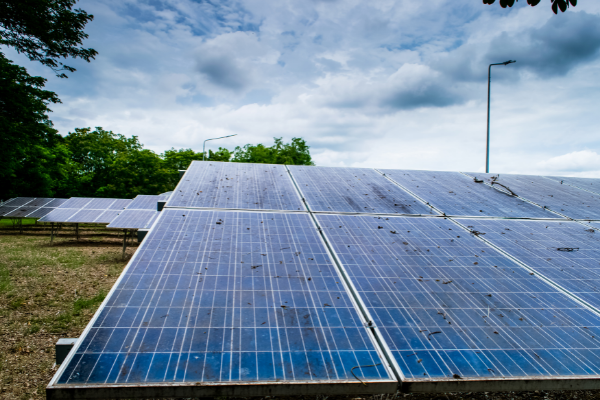The sun is undoubtedly the most powerful energy source we have, and still, we are not able to collect a fraction of this energy. Although, we all know that utilizing this power can make a big difference to the globe. However, people are now understanding the huge benefits of solar energy and it is now rapidly being adopted worldwide.
Since the requirement to utilize renewable energy sources for generating electricity is evident, most business and domestic households are becoming eco-conscious nowadays. And installing solar Power conditioning units is one the simplest ways to meet your power requirements while being an environmentally conscious citizen.
To ensure that the product lives for its lifetime it is crucial to identify dependable solar panel raw material for any product. With the competitive market situation with a requirement of being cost competent, choosing the right solar panel raw material to strive for a perfect balance between commercial and technical terms in the product is quite challenging.
The picture in the case of the solar PV module is identical. A solar module, other than a solar cell that generates power output, also houses an encapsulant, backsheet, solar glass, (anodized aluminum) frame, and junction box. Although each raw material used in the solar module has a particular purpose, we consider these 3 materials i.e. backsheet, encapsulant, and glass are of major importance and any effect on these could considerably affect the performance of the whole power plant.
Additionally, they might significantly affect the LCOE (Levelized Cost of Electricity) of the power plant which may sometimes reduce the anticipated economics from the plant.
Importance of Three Important Raw Materials Needed for Solar Panels
Backsheet
A backsheet in the solar module mainly performs three important functions i.e. DC isolation, UV/temperature fluctuation/moisture resistance, and internal reflection. The backsheet creates a DC insulation layer between the solar cell and the outside world. A backsheet is also resistant to UV rays and moisture.
It also acts as a wall to the outer temperature changes to the solar cells, all of which could reduce the performance of the solar module. Another very essential purpose of a backsheet is to reflect the light internally. Any light which passes through the cell is not essentially used for solar power generation. To give such (photons) light another chance to produce electricity, they must be reflected towards the cell. This function is carried out by the innermost surface of the backsheet.
Despite these, a backsheet is also estimated to adhere to the encapsulant, hold the complete solar cell raw material assembly in place, and so on. With such functions selection of the right backsheet is a must.
Encapsulant
The encapsulant in the solar module has three key roles i.e. transmittance of light, holding the solar cell assembly, and adhering to backsheet and glass. Firstly the encapsulant is expected to transmit all the light falling on it. This is to make sure that the cell assembly below gets sufficient light to generate power output. Secondly, the encapsulant contains the cell assembly together.
This is to ensure that the raw solar cells do not get short-circuited by touching each other. To ensure these two properties i.e. gel content and shrinkage comes into play. The gel content of any encapsulant safeguards that they have sufficient intermolecular strength which could hold the module together. Encapsulants generally tend to shrink at 150+ °C laminating temperatures.
Such shrinkage is required to be within the limit to ensure that there are no misalignments of strings and/or cell short-circuiting. Thirdly, it is also essential that they adhere sufficiently to the glass on the front side and backsheet at the backside of the solar panels. In addition to this, an encapsulant is also required to be constant at elevated temperatures and high UV exposure.
Glass
The next most essential raw material in the solar panel manufacturing is solar glass. The glass in the solar modules has the following purposes, namely enabling transmission while reducing reflection, mechanical power & rigidity, and compositional stability. The glass is the initial surface that the light interacts with. Therefore it becomes exceptionally important that the glass transmits the light to an extreme level while reducing the reflection off its surface.
In its natural form, the glass reflects around 4 – 10% of incident light on it which may result in a noteworthy loss of power output. The presently available glass is therefore coated over the front surface with an anti-reflective coating (ARC) which makes sure that such reflection is minimalized to as low as 1%. The next important function of the glass is to offer mechanical strength & rigidity to the solar panel.
The glass in use is mostly tempered which guarantees that the glass has sufficient strength for such a purpose. Also as they are exposed to all the types of radiations, the glass is estimated to mostly reflect such radiations which may considerably affect the performance of the solar panel. For such a reason the glass the required component must be added/removed as each of them has a particular role to play is also estimated to be stable for its lifetime.
Conclusion
The selection of the right raw material for solar panel manufacturing is crucial and any change from standard BoM must be tested and verified completely to ensure that the module would meet its claimed lifetime without any hassle. Additionally, one must also consider the local climatic conditions where the solar module must be installed and follow all instructions provided by the solar manufacturer/ EPC provider to ensure that the degradation of a power plant is well within the restrictions.
Being a leading solar panel manufacturing company in India – Insolation Energy guarantees that all the solar modules are manufactured as per the standard BoM, which results in the development of the best solar panels in India. Additionally, sample modules from each lot are tested comprehensively by our solar panel raw material suppliers to make sure that they meet more than the desired standards. All our solar panel manufacturing raw material suppliers are verified and reviewed from time to time to ensure that they supply us with only premium-grade solar panel raw material.






